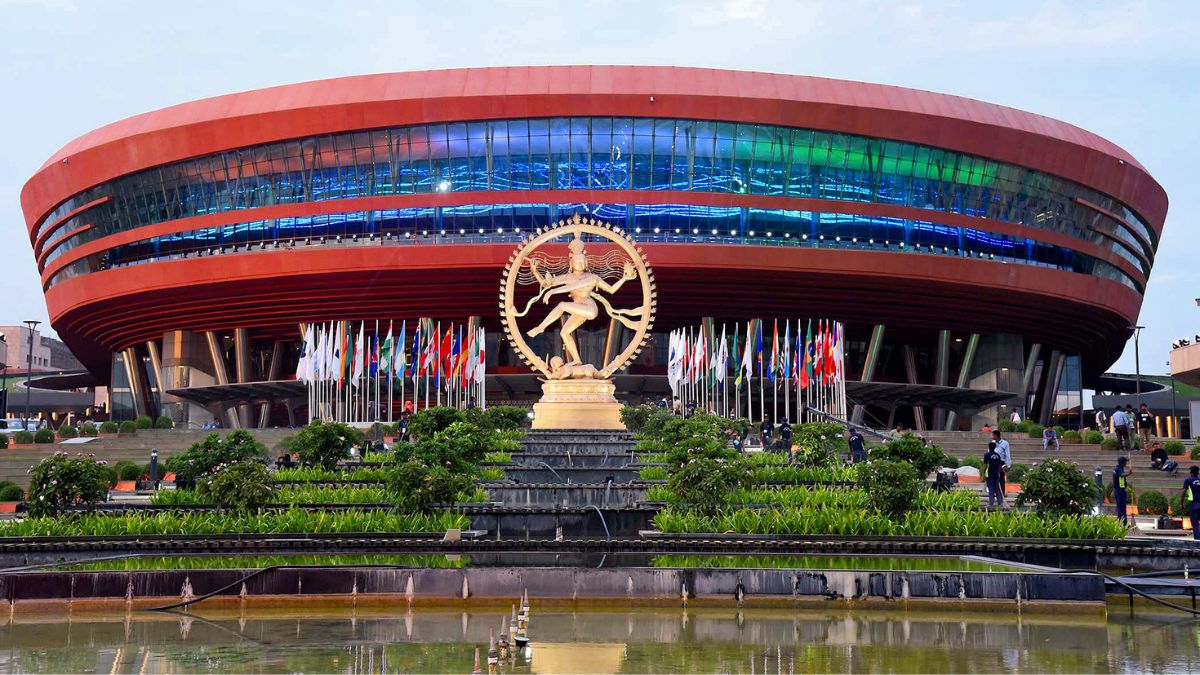New Delhi
The Bharat Mandapam has become the talk of the town since its inauguration. People worldwide are talking about the architectural marvel that is the venue of the G20 Summit, showcasing India’s diversity with artworks. The Sunday Guardian interacted with its architects, Sanjay Singh and Tariq Mujib, director and associate director of Arcop Associates, to understand how they pulled it off. Excerpts:
Q: How proud are you that the Bharat Mandapam is now ready to host the G20 summit?
A: [Singh]: Completing the Bharat Mandapam project is a matter of pride for us as a firm as well as for the country. We’ve been able to do it with exemplary results. We designed this project in association with ADAS, Singapore. We are proud that we’ve been able to do a project that showcases our culture and heritage to world leaders when they are in India for the summit.
Q: What was the inspiration and vision behind the structure?
A: [Singh]: The aim was to build an iconic landmark, but we wanted it to go beyond that. We wanted to design something that shows India’s arrival, especially in terms of the architectural industry. At the same time, we wanted the project to be connected to its roots. If you look at the Mandapam, it is elliptical and has a very fluid form that is inspired by the way Yamuna is. It can take any form and doesn’t have rough edges. The site is located right next to Lutyen’s Delhi, the Kartavya Path. So, we wanted to pay respects to that. That is why the project has been lifted up, to create a window to Delhi, where you can see the canopy of India Gate, the Kartavya Path, and the domes of the Rashtrapati Bhavan. That is our inspiration, and that’s the vision with which we proceeded.
Q: Can you tell us about the design of Bharat Mandapam?
A: [Singh]: The design of the Bharat Mandapam was finalised after various attempts. We tried a rectangular and octagonal form, and finally decided on the elliptical, realising that this is the form that is going to be most suitable functionally and aesthetically.
The entire convention centre is inspired by the river Yamuna. The main building was designed in an elliptical form alongside two ramps, which is inspired by a unique image that we found of two fish from the respective rivers Yamuna and Ganga joined at the top with an elixir of water.
Q: How do you reflect India through this grand building?
A: [Singh]: The design was inspired by the core and soul of India, like the Yamuna and Ganga. We used civilisations that flourished along the water, our culture, art, and heritage, and demonstrated how people dress here. We brought all these into the building’s design so people from across the world will be introduced to the diversity that this country has, which no other country has in the world. At the same time, it attracts common people who relate to the art that comes from their villages and hometowns. The idea was to create a building that appeals to global audiences and local people across our societal fabric.
Q: Can we confidently say that the world’s best convention centre is now in India?
A: [Mujib]: I am very confident that we’ve created one of the best convention centres in the world. But I would love to hear what world leaders think about it, and if they say yes, India has created something unparalleled and hard to match, that would be our reward.
Q: Can you highlight the features of Bharat Mandapam?
A: Bharat Mandapam is distributed across four levels. Level one is dedicated to the meeting rooms with a capacity of 50 to 200 and support areas.
On level two is the G20 Summit Hall, which has the leaders’ lounge. There are also two auditoriums of 600 and 900 capacity. On level 3, is a multifunctional hall of 4,000 capacity, divisible into 800, 1000, 2000, and various configurations for exhaustive use. The same floor has a 3,000-capacity plenary hall that goes up to level four. This is the window to Delhi where delegates can see the view of Kartavya Path, the India Gate canopy, the domes, etc.

